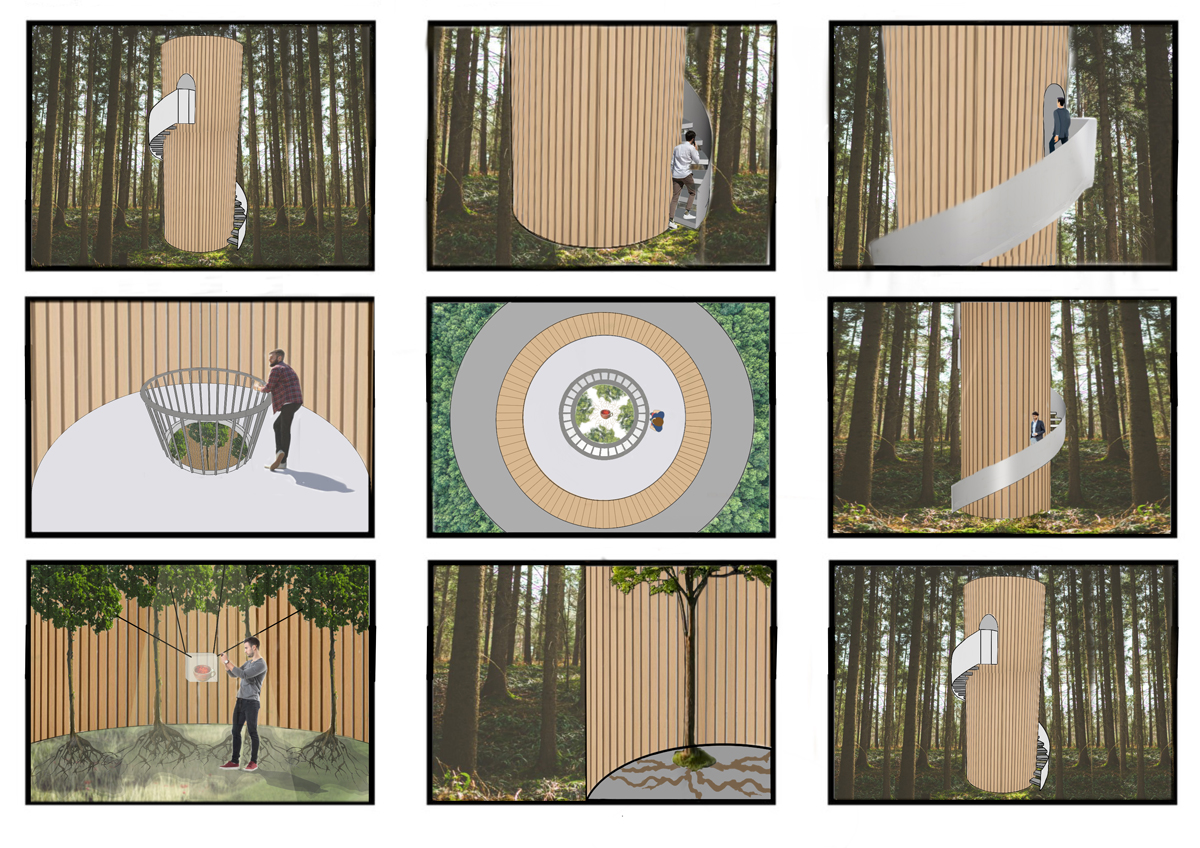Decontextualise to Decolonise: The Amber Cup
Five students from the Interior Architecture course at the University of Brighton write about the Amber Cup as part of the Decontextualise to Decolonise project.
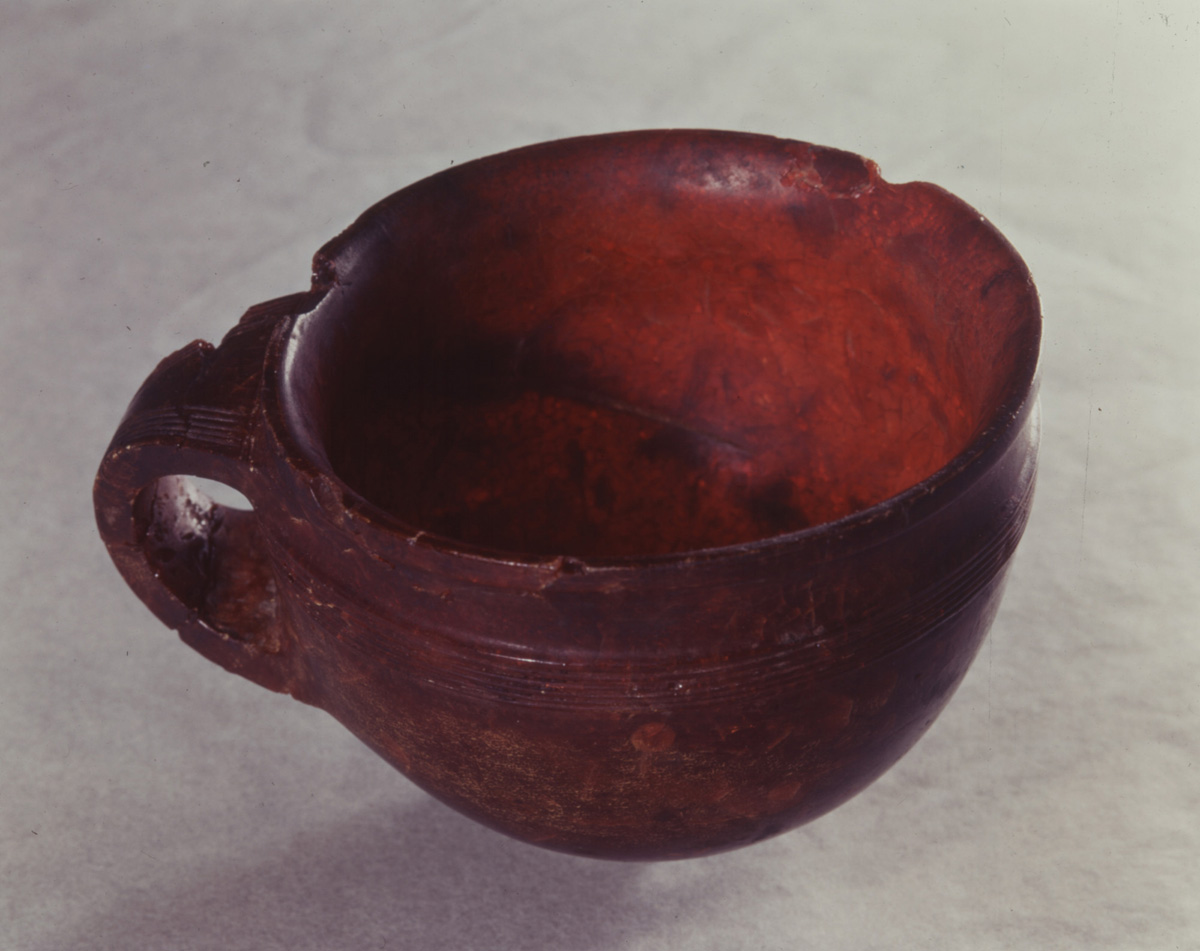
Restoring the Baltic narrative: Reimagining the Hove Amber Cup in a Temple of Solar Healing – Neve Fairholme
This project is like a magical story about a special cup called the Hove Amber Cup. A long time ago, people from a place called the Baltic region made this cup. They used a shiny material called amber, which started as sticky tree sap millions of years ago. Over time, it turned into hard, beautiful amber.
In this magical space, I’ve imagined a temple that uses sunlight in a fun way. Just like people in the Baltic region thought amber had healing powers from the sun, the temple has a round hole in the roof called an oculus. This hole lets sunlight shine down onto a special table where the cup sits. The sunlight makes the cup glow, like it’s alive and full of the sun’s healing magic.
Even though this space is pretend, the projects goal to decolonise British museums is real. It reminds us that many stories remain untold and aims to bring them back to life. It’s about connecting with old traditions, respecting the past, and showing how history can still guide and inspire us today.
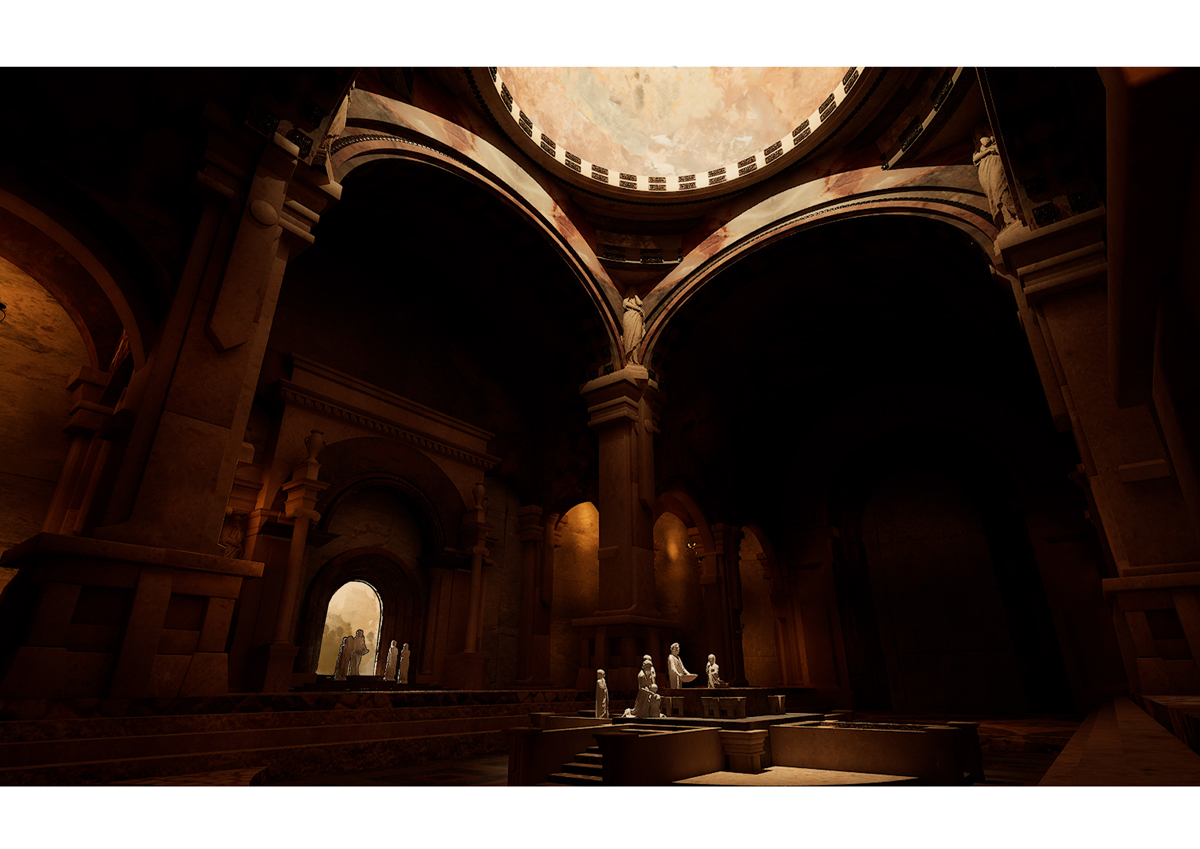
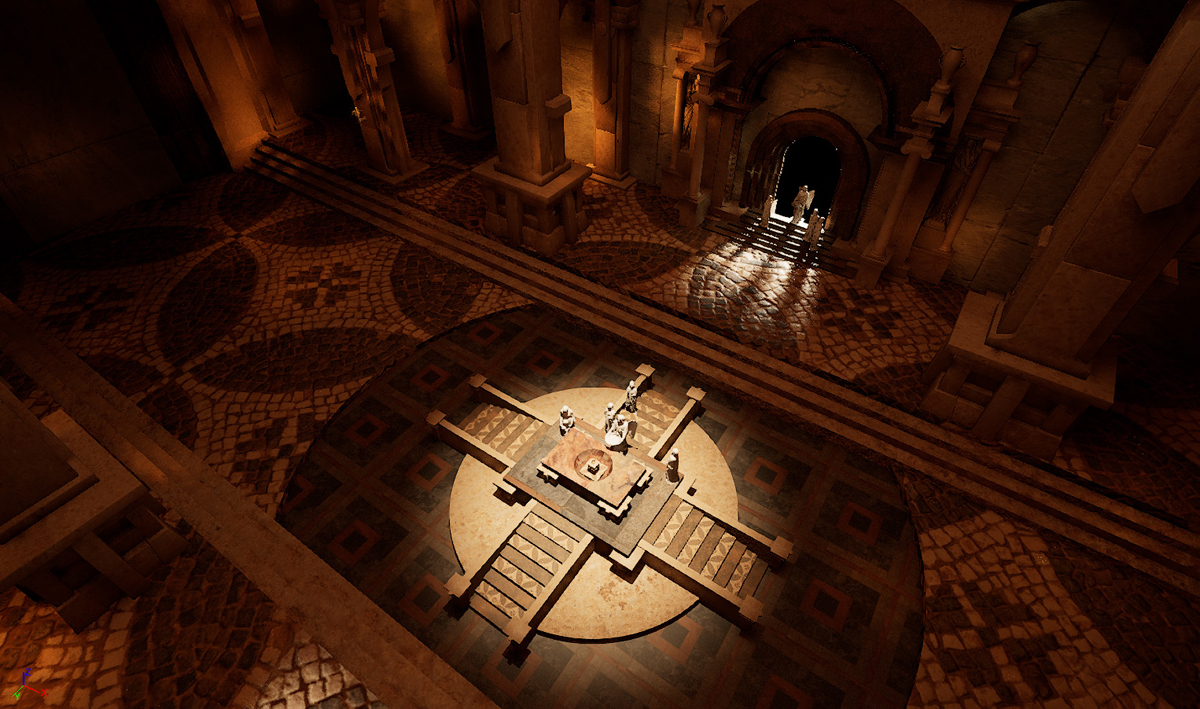
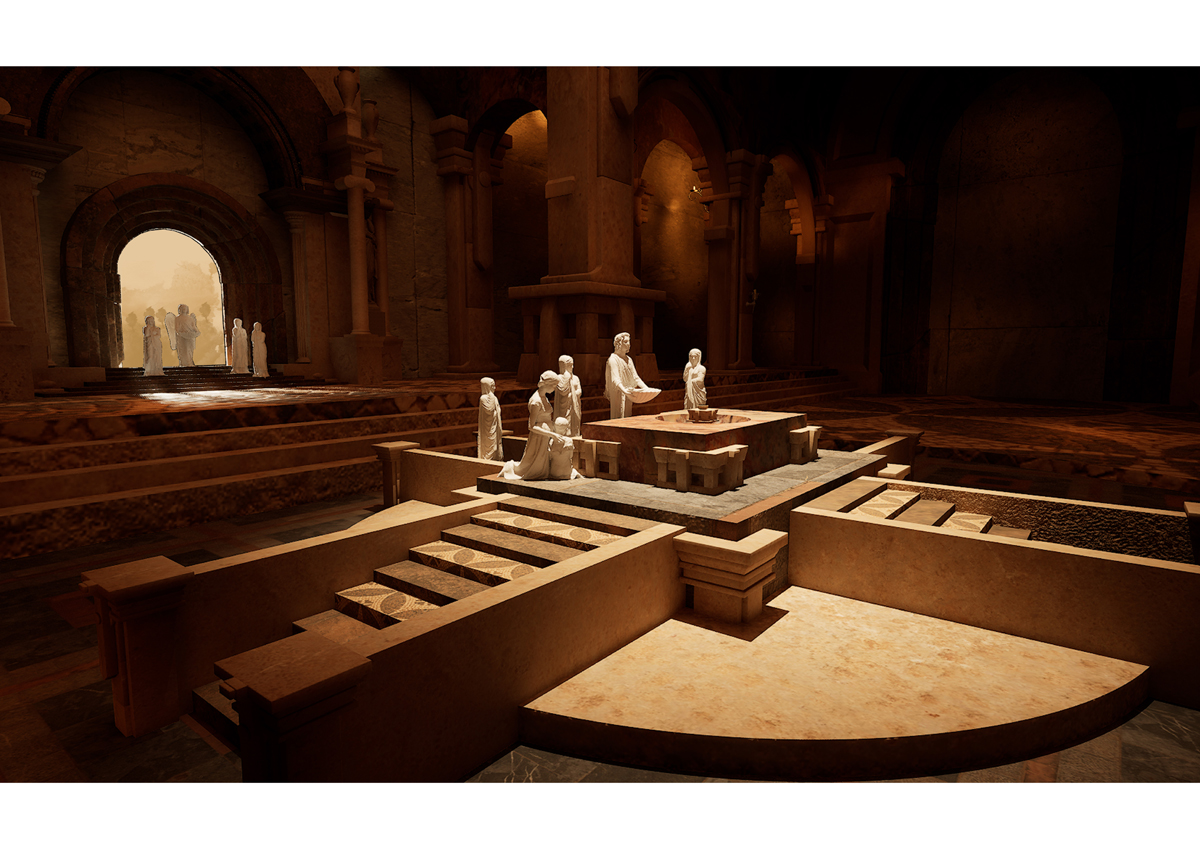

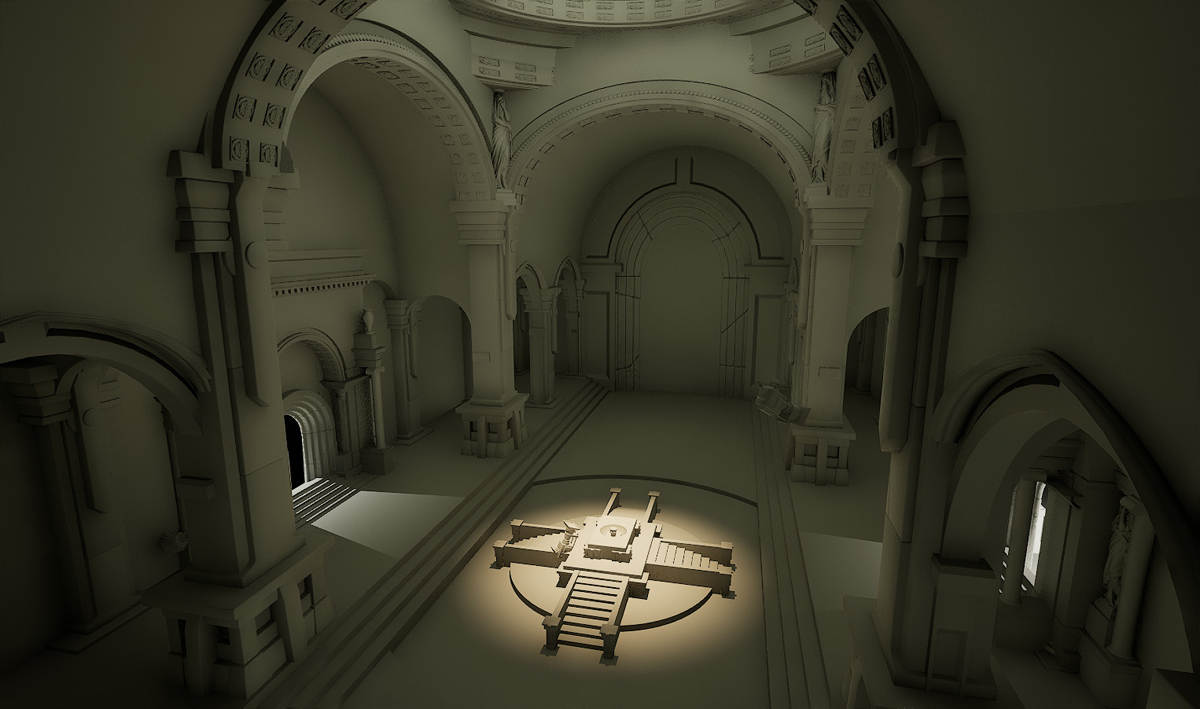
The Healing Sensation of the Amber Cup – Orla Hartley
I learned about how amber can help people feel better and where it comes from. The Amber Cup is made from tree sap that turned into amber a long time ago, during the bronze age. People say it helps them feel calm and peaceful.
When I thought about making a new place for the cup, I wanted it to feel like nature and be a good spot to think. So, I imagined a little shelter in a forest, built around a big tree. I added seats and a higher platform in the tree. The Amber Cup stays inside the tree, so people can come close and use it to feel better.
I chose a forest because people often go there to think and get away from their worries. It’s already a place where they can heal and reflect.
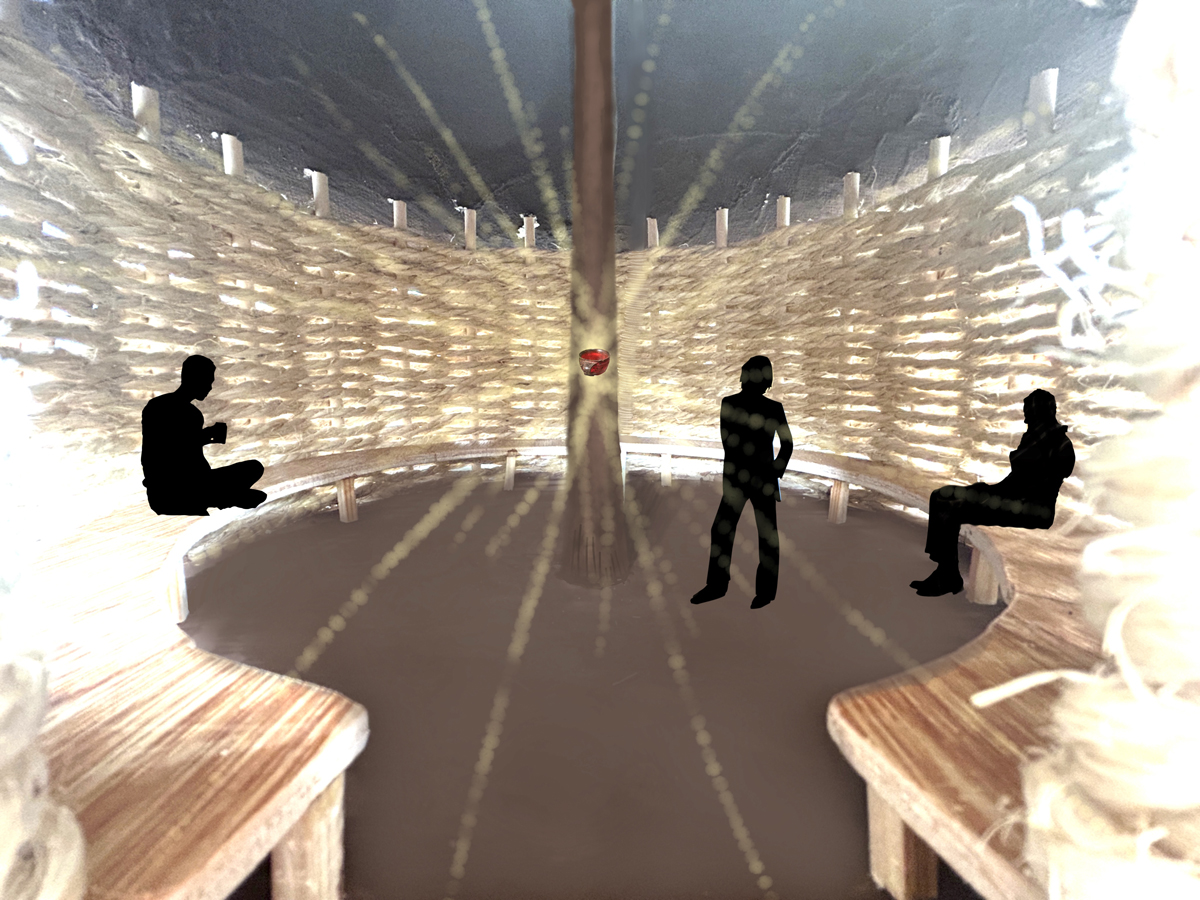
A Sanctuary for Healing – Freya Jaye
I imagined the Amber Cup in a peaceful and calm place. Amber makes me think of healing, and I like to believe it was used in spiritual ceremonies. It was found in a carved oak coffin, so I think it should be in a similar sacred spot.
I picture the cup resting in a sunny forest surrounded by oak trees, as if time has stopped. This setting makes me want to appreciate and think about it. The quiet forest would help visitors feel calm and relaxed. By holding and feeling the cup, people could connect with it more deeply, letting the space take away bad feelings and promote healing.
This space is meant to make people feel more hopeful about life, bringing together body, mind, and spirit. In traditional museums, objects are often taken out of their cultural and spiritual context, making them just old things. My idea is to give the cup back its meaning by placing it in a setting that respects its possible purpose. By focusing on touch, reflection, and emotions, this experience goes against the usual “do not touch” rule, helping people feel a stronger and more personal connection with history and the object itself.
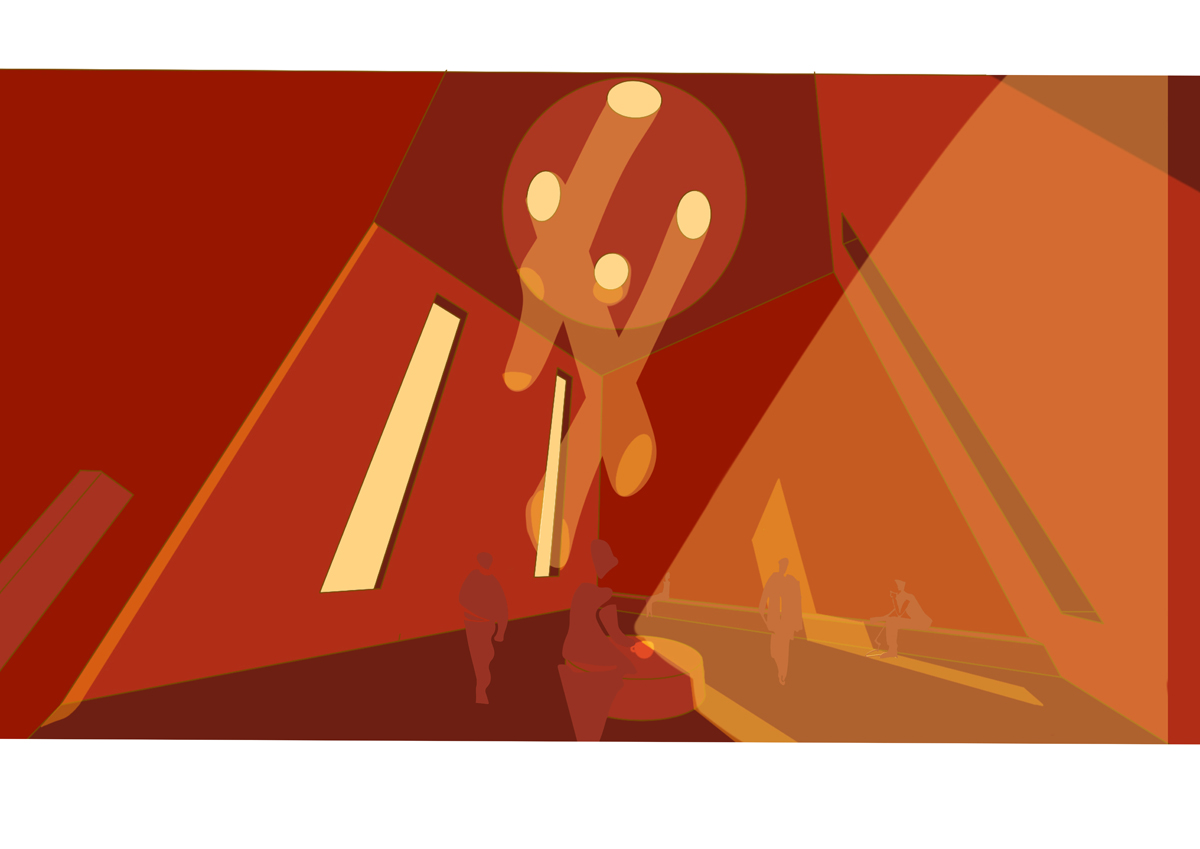
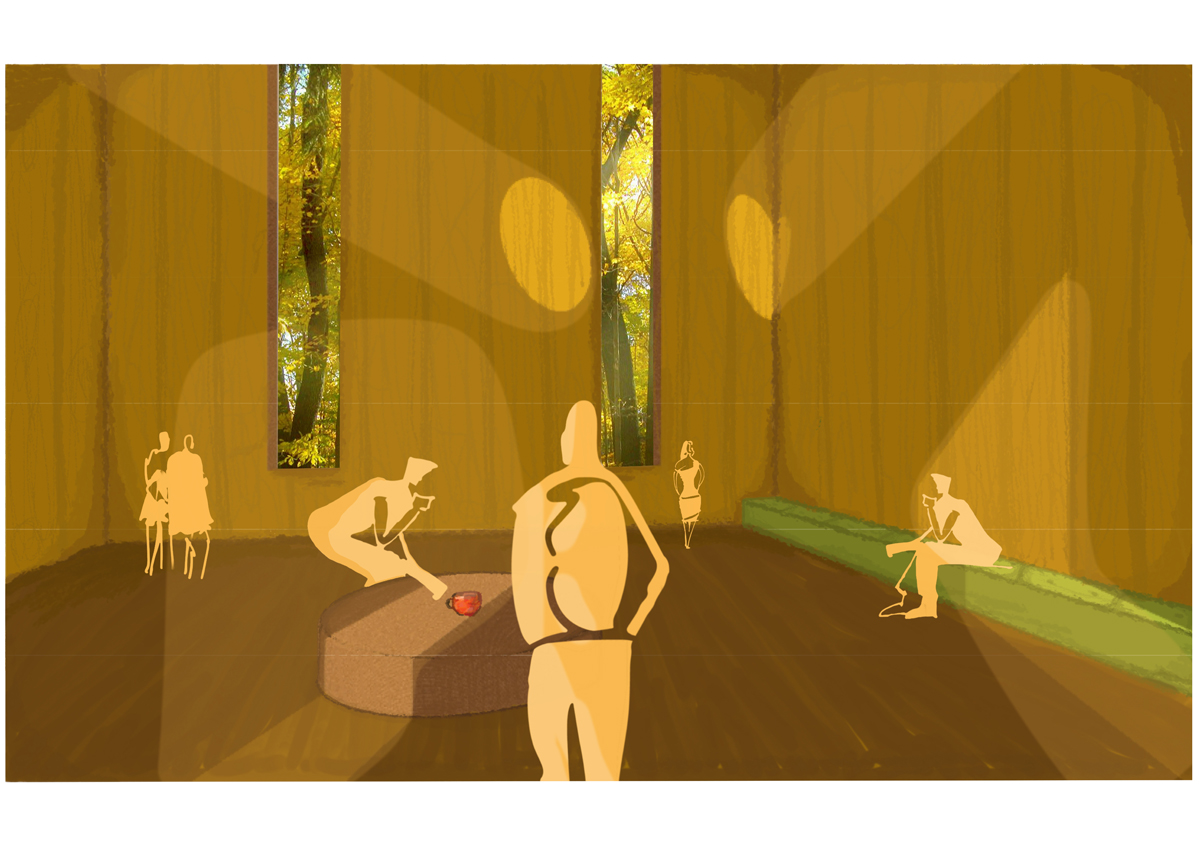
Amber Sanctum: A Space to Reflect and Restore – Shavona Phillips
This project is about a special place that tells the story of amber, a shiny material that has been around for a long time. A long time ago, people made a beautiful cup out of amber, and it was found in Hove, inside an oak coffin, surrounded by trees.
My design takes you back to the forest where amber’s story begins. When trees get hurt, they let out a sticky liquid called sap, which helps them heal. Over many years, this sap turns into amber, a material that lasts forever and keeps memories of nature inside it.
The relocation of the Amber Cup is a gesture of decolonisation,. The space is hidden behind tall copper walls, making it a quiet and peaceful place. In the middle, the Amber Cup sits on a water fountain, and the light makes its golden colours shine.
This place is for people to stop, think, and feel calm, just like amber once helped heal the trees. It’s a spot where you can feel connected to nature’s amazing journey.
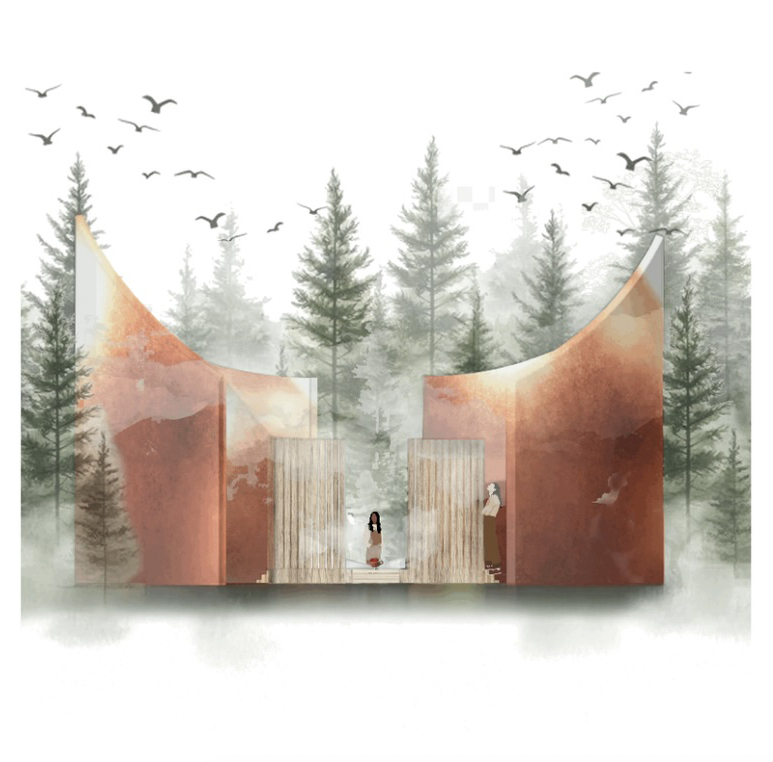
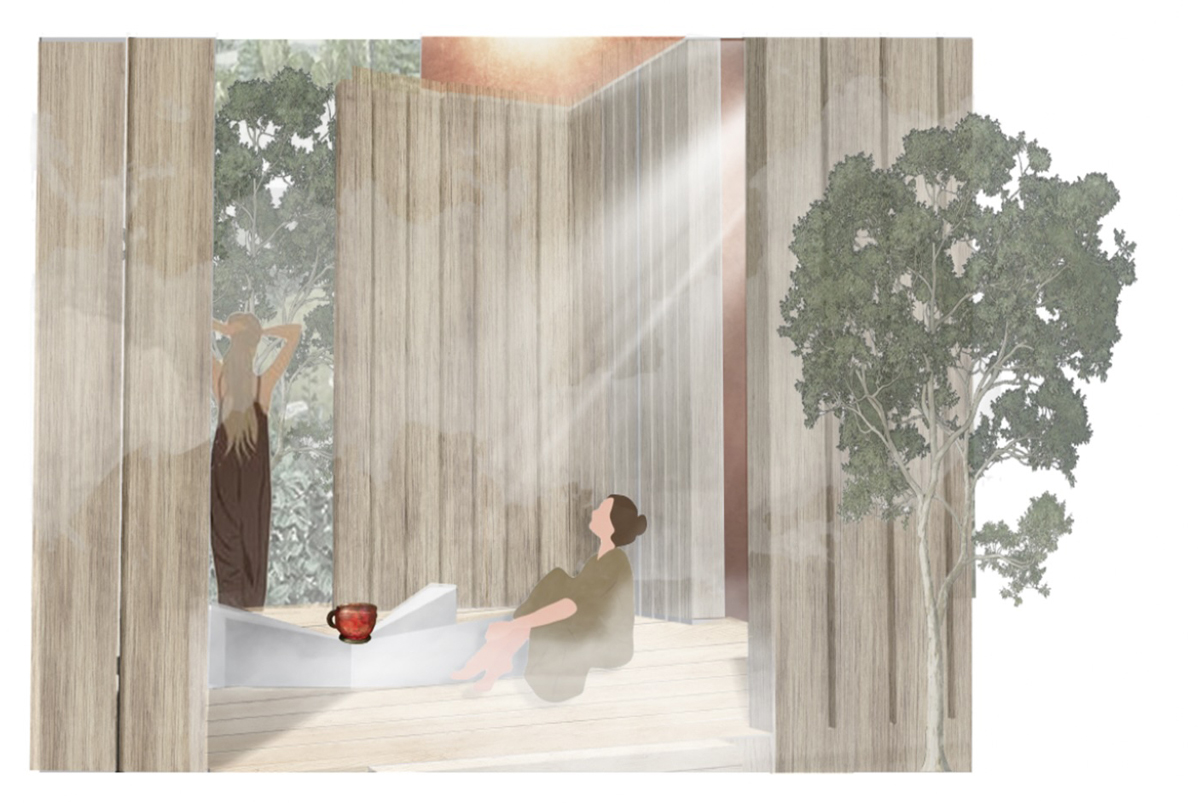

Woodland Sanctuary – Evie Slingsby
The Amber Cup makes people think of peaceful forests and healing. It was found in an oak coffin, so I decided to put it in a forest to make it feel closer to oak trees and nature.
I imagine the cup hanging from oak trees inside a wooden building, with a balcony where people can look at it from above. Being in nature helps visitors feel more connected to the Amber Cup and think about how it was used a long time ago in the Baltic Era. This forest setting is very different from how it is shown in a museum today, which is exactly what I wanted.
This storyboard shows how visitors would walk through the building and see the Amber Cup in a calm and exciting way. By focusing on the forest, the design helps visitors feel more connected to the cup’s interesting history.
